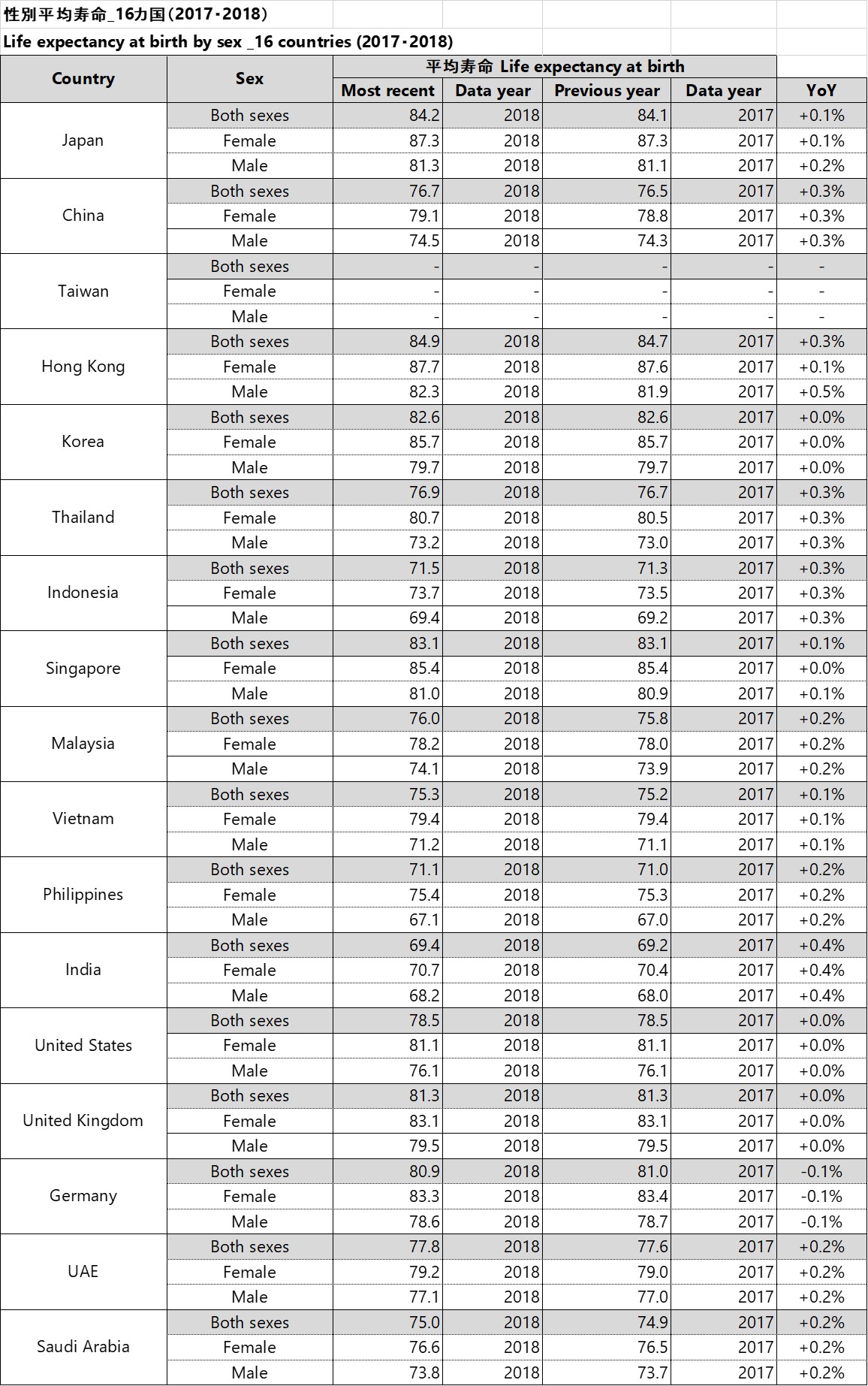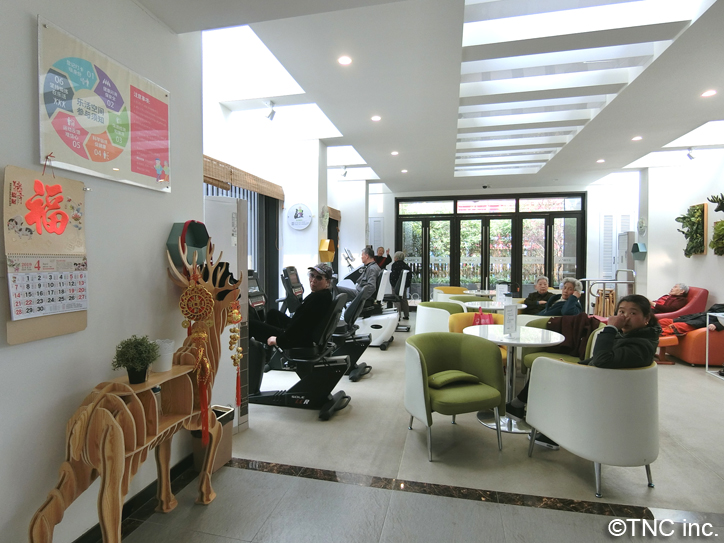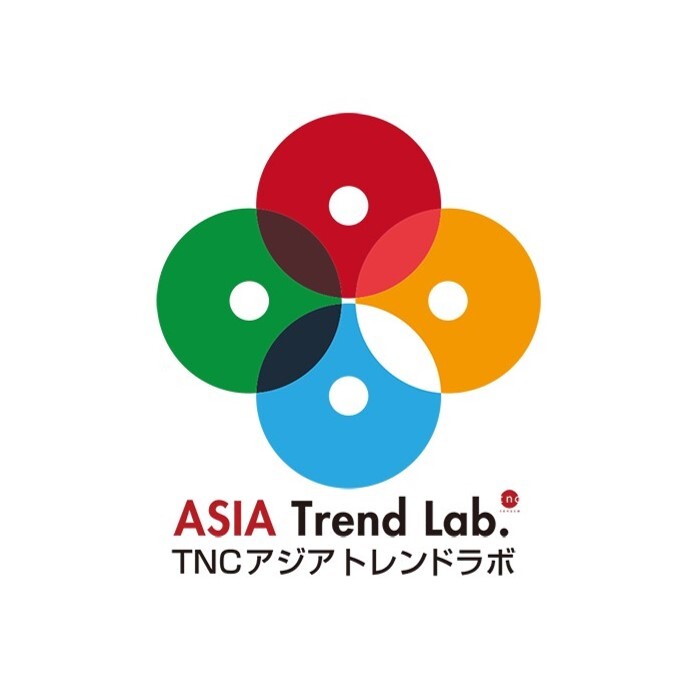[China] "Happy Life Space," a free gym available to local senior citizens / A popular place for health promotion and interaction
- Release date: Apr 08, 2019
- 2109 Views
Free to Residents, Fitness Facility for Seniors Now Available
Most residential areas in Shanghai are divided into units called sub-districts. Located in the entrance of the sub-district in the Zhabei district, where Shanghai Railway Station is located, "Happy Life Space" is a fitness gym that can be used free of charge by any senior citizen living in the sub-district.Designed by the Shanghai Sports University, the gym has machines for the elderly (including one that allows them to sit comfortably and move their legs), a café area where they can have a cup of tea and chat, and a reading room where they can spend the whole day. The gym is run by the local government, and the reception staff also serves as instructors. It's so popular that the machines are almost full during the day on weekdays.
Shanghai boasts one of the highest life expectancy rates in the world, and senior services are expected to continue to grow
In recent years, the Chinese government is said to be focusing on improving the health of the people and the well-being of the elderly. A growing number of free events are being held in each region, including cultural workshops, pet training classes and other free events for retirees to participate in, to help them enjoy a happy and healthy retirement. The "Happy Life Space" is part of this trend, and as of April 2019, it is being piloted and is expected to be built in each residential area in the future.According to World Bank statistics, life expectancy in China has been increasing year by year and will be 76.5 years in 2018. Among them, Shanghai's life expectancy is among the highest in the world at 83.63 years (83.784.1 years in Japan).
Life expectancy at birth by sex_16 countries

Reference The World Bank ”Life expectancy at birth, total years) - Europe & Central Asia (IDA & IBRD countries)” Retrieved September 8, 2020, from (https://bit.ly/35Ci7Wb)[https://bit.ly/35Ci7Wb] The World Bank ”Life expectancy at birth, female (years) - Europe & Central Asia (IDA & IBRD countries)” Retrieved September 8, 2020, from (https://bit.ly/2RryWL2)[https://bit.ly/2RryWL2] The World Bank ”Life expectancy at birth, male (years) - Europe & Central Asia (IDA & IBRD countries)” Retrieved September 8, 2020, from (https://bit.ly/2RkGeR3
Life expectancy at birth by sex_16 countries
Also, there are a large number of healthy older people, many of whom have a long healthy life expectancy. Regarding the WHO's "healthy life expectancy" (the period of time during which people can live independently without dependence on daily and continuous medical and nursing care), The average healthy life expectancy in China is 68.7 years, and is on the rise. Among Asian countries, Japan has the highest average healthy life expectancy, followed by South Korea, Singapore, and China.Healthy life expectancy (HALE) by sex_15 countries (2015・2016)

Reference World Health Organization ”Healthy life expectancy HALE) Data by country” Retrieved September 11, 2020, from (https://bit.ly/3isLAW1
Healthy life expectancy (HALE) by sex_15 countries (2015・2016)
China's healthy life expectancy seems to continue growing in the future, supported by such communities’ efforts.
-

Author profile
TNC ASIA Trend Lab
TNC ASIA Trend Lab is an information organization run by TNC Inc. that researches and shares trends in Asia. It supports corporate marketing activities by finding insights from trends rooted in the lifestyles and habits of local consumers.
http://tnc-trend.jp/ -

Editor profile
Yang Yan
Chinese researcher living in Japan, sharing stories of overseas consumer life, mainly in China. Born in the era of the one-child policy, it is said to be of the generation with a heavy cumulative burden of support, the so-called "4:2:1" ratio.
 Global Market Surfer
Global Market Surfer CLP
CLP